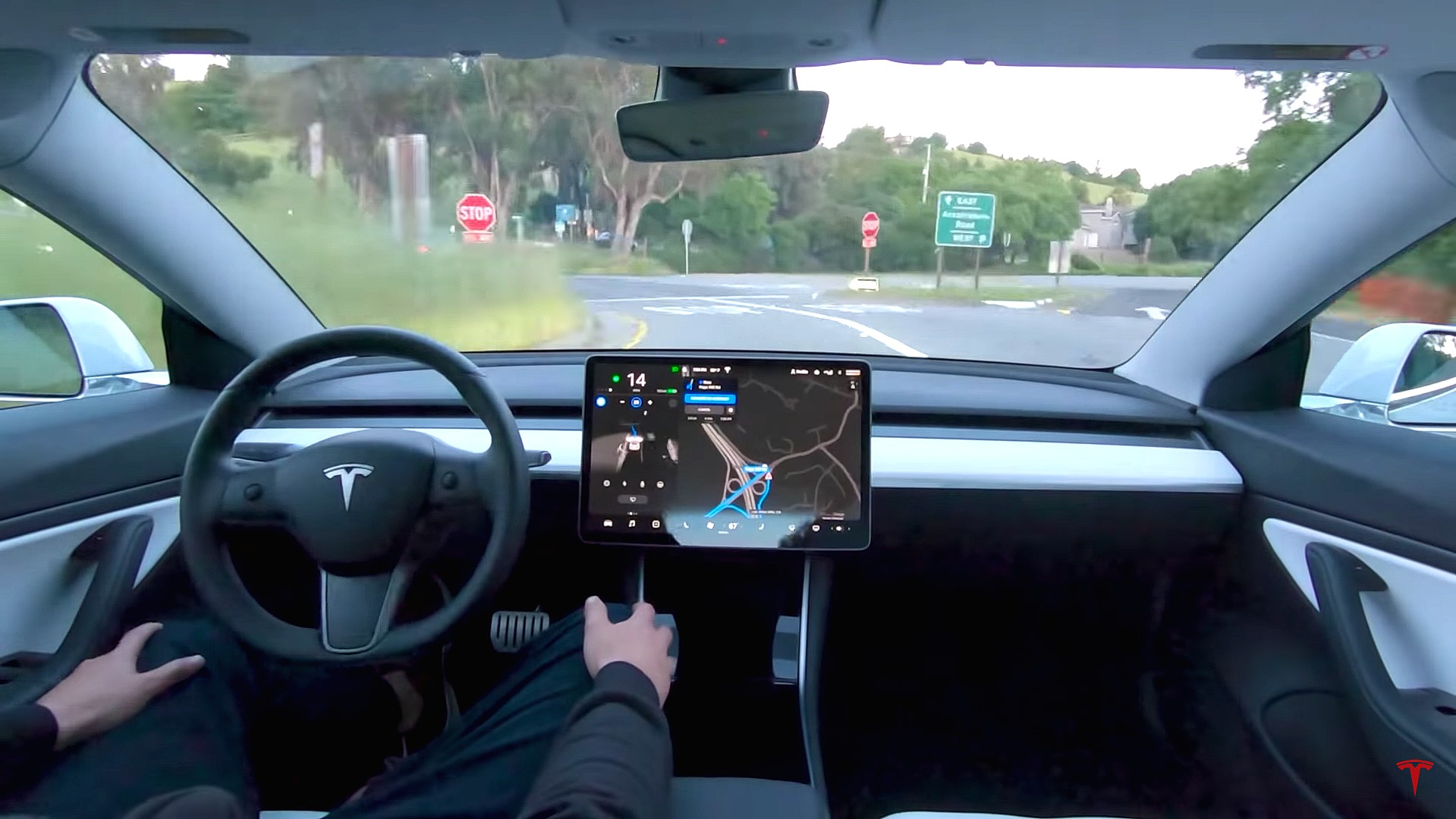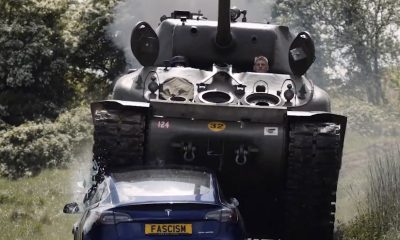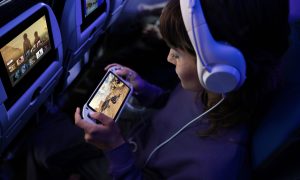

News
Tesla set to launch a Full Self-Driving subscription service this year
Tesla is set to roll out a subscription service for its Full Self-Driving suite later this year, Elon Musk said.
During the company’s Q1 2020 Earnings Call, Musk and CFO Zachary Kirkhorn briefly confirmed the introduction of a subscription program for Full Self-Driving. The capability to acquire the company’s FSD suite in installments was mentioned as well, which could allow drivers to experience Tesla’s latest and greatest tech without having to pay the full $7,000 price tag at once.
It was recently discovered by Tesla hacker-enthusiast @greentheonly that the source code for the company’s vehicles actually contained references to a pay-as-you-go subscription model. Green stated that the pay-as-you-go plan sat within the source code for quite some time. Now it seems Tesla is planning to release the payment plan option by the end of 2020.
When asked about the possibility of a subscription service in the Q1 2020 earnings call, Musk replied, “I think we will offer Full Self-Driving as a subscription service, but it will be probably towards the end of this year.”
While this option could end up being more convenient for some owners who do not wish to pay $7,000 for FSD at once, Musk explained the advantages of purchasing the suite outright. The Tesla CEO described the act of buying FSD in one payment as an “investment in the future.”
“I should say, it will still make sense to buy FSD as an option as in our view, buying FSD is an investment in the future,” Musk said during the earnings call. “And we are confident that it is an investment that will pay off to the consumer – to the benefit of the consumer.”
CFO Zachary Kirkhorn agreed with Musk, stating that the economic benefits undoubtedly lie within a one time purchase, and not with spreading payments out over the life of the vehicle. He added, “financially, rolling the upfront purchase of the FSD option into a loan in the vehicle or a lease will be the least expensive plan on a monthly basis to own, plus you preserve the option value of increased value over time.”
While understanding the fact that it will be cheaper to purchase the FSD suite at once in the long run, some drivers may feel more comfortable with paying for the features over time as Tesla continues to develop its technologies. The company recently rolled out a Traffic Light and Stop Sign recognition feature, allowing for navigation through intersections with minimal driver interference. Other features such as inner-city driving and Reverse Summon are still yet to be released.
Tesla announced in early April that the FSD suite would be due for a price increase on July 1, 2020. It is currently unknown how much the price of the driving features will rise, but the last increase, which took place in November 2019 after Smart Summon was released, added $1,000 to the Full Self-Driving suite’s cost.
News
xAI receives more Tesla Megapacks for Colossus 2

xAI is bolstering its Colossus 2 data center in Memphis with 168 Tesla Megapacks, enhancing the energy infrastructure for its ambitious AI supercomputer expansion. The deployment underscores xAI’s push to lead AI innovation while addressing environmental concerns.
The first Colossus site is connected to a 150 megawatts (MW) substation powered by MLGW and TVA. It is supported by approximately 156 Megapacks, providing 150 MW of stored energy backup to xAI’s supercomputer. The 168 Tesla Megapacks recently delivered to xAI’s Memphis site will provide battery storage backup to Colossus 2.
In December 2024, xAI doubled the capacity of Colossus to 200,000 Nvidia H100 GPUs, which consumes 250 MW of power–enough to energize 250,000 homes. In March 2025, the AI company bought a 1-million-square-foot site in Whitehaven, Memphis, for $80 million. xAI’s Whitehaven site could host up to 350,000 GPUs with the potential to deploy the largest number of Tesla Megapacks for backup power.
xAI plans to scale Colossus up to 1 million GPUs to create the world’s largest AI supercomputer. A 1-million-GPU setup would require over 1 gigawatt, about one-third of Memphis’s peak summer demand.
Initially reliant on natural gas turbines, Colossus faced criticism for nitrogen oxide emissions. The 150 MW substation, completed in early 2025, reduced turbine use by half, with Megapacks providing cleaner backup power. By fall 2025, xAI expects the second substation to come online. Once the second substation is online, the remaining turbines will only be used for backup, reducing the project’s carbon footprint.
Tesla Energy’s Q1 2025 performance, with a 156% year-over-year increase and 10.4 GWh of storage deployed, supports xAI’s needs. Tesla’s Megapack factory in Waller County, Texas, set to create 1,500 jobs, signals further commitment to scaling energy solutions for projects like Colossus.
xAI’s rapid expansion, backed by Tesla Megapacks, positions it to rival AI leaders like OpenAI and Google. The Colossus 2 deployment reflects a strategic blend of cutting-edge AI and sustainable energy. As Memphis’ infrastructure adapts to unprecedented power demands, xAI and Tesla are reshaping the AI landscape with a focus on efficiency and environmental responsibility.
News
Grok 3 by xAI Rolls Out on Azure AI Foundry with Free Trial
Grok 3 is now on Azure AI Foundry with a free preview until early June. From code to vision, Grok joins a growing roster of powerhouse models.

xAI’s Grok 3 model is now available on Microsoft’s Azure AI Foundry Models, launching with a free preview to drive AI innovation. The collaboration marks a significant step in making advanced AI accessible to developers worldwide.
Grok 3 became available on Microsoft’s Azure AI Foundry Models on May 19, 2025. Developers can explore xAI’s Grok 3 at no cost through early June. After the free trial period, Grok 3 prices will be as follows:

“Microsoft and xAI are thrilled to unveil the availability of Grok 3 into the Azure AI Foundry Models, marking a significant milestone in AI accessibility and innovation,” Microsoft stated in its announcement.
The partnership integrates xAI’s cutting-edge model with Azure’s secure, scalable infrastructure, enabling enterprise scenarios in reasoning, coding, and visual processing. Grok 3 is accessible via Azure AI Foundry’s catalog, alongside models from OpenAI, Meta, Cohere, NVIDIA, and Hugging Face, reflecting Microsoft’s commitment to a diverse AI ecosystem.
“The addition of xAI’s Grok 3 underscores Microsoft’s commitment to support an open, diverse AI ecosystem, rather than relying on a single model provider,” the company noted.
Like other AI models in Azure, developers can easily discover and deploy Grok 3’s model card. Grok 3 is also available for testing on GitHub models.
Microsoft provides two flexible deployment options for integrating xAI’s Grok 3 into applications: Standard Pay-Go or Provisioned Throughput Units (PTUs). The Standard Pay-Go option allows pay-per-token API calls for quick scaling. Meanwhile, the PTUs are better for reserved capacity with predictable latency.
“For production scenarios where you expect steady high volume or need strict latency, provisioning Grok 3 with PTUs can be cost-effective and reliable,” Microsoft advised.
The launch of Grok 3 on Azure AI Foundry empowers developers to build intelligent assistants, process large documents, or explore new AI applications. As xAI and Microsoft combine innovation with robust tools, Grok 3’s arrival signals a new era of AI development, inviting creators to leverage its capabilities and shape the future of technology.
Elon Musk
Tesla Robotaxi deemed a total failure by media — even though it hasn’t been released
Nearly two weeks before it is even set for its planned rollout, Tesla Robotaxi has already been deemed a failure — even though it is not even publicly released.

Tesla Robotaxi is among the biggest tech developments of the year, and its June launch date has not yet arrived.
This does not matter to skeptics of the company, as they have already deemed the rollout a “failure,” “an enormous mess,” and plenty of other adjectives. No matter what, several outlets are already leaning on biased opinions and a lack of true evidence that points in any direction.
Futurism posted an article this morning claiming that Robotaxi is “already an enormous mess,” citing the opinions of Dan O’Dowd, perhaps Full Self-Driving’s biggest critic. There is no mention of any of the excitement or prosperity that would come from the opposite side of the argument.
Instead, it included that O’Dowd felt it was a failure in an 80-minute drive around Santa Barbara.
This is fair to include: Full Self-Driving is not perfect, which is why Tesla will implement safeguards like teleoperation at first. However, it’s not like it’s so awful it isn’t even remotely close. Personally, my experience with FSD was incredibly successful, responsible, and it was something I still wish I had on my car to this day. I wish the article would have included a quote from someone who is as equally passionate about FSD, just from the other side of the argument.

Credit: Tesla
There is no mention of Tesla’s most recent Vehicle Safety Report, which showed Autopilot-enabled cars are nearly 10x less likely to be involved in an accident compared to the national average. This might not be the same as Full Self-Driving, but it is still a testament to what Tesla has achieved with its driver assistance systems.
To be fair, Tesla has been a company that has missed timelines, especially when it comes to FSD. I used to roll my eyes a bit when CEO Elon Musk would say, “We’ll have Full Self-Driving finished by the end of the year,” or “We’ll have a million robotaxis on the road next year.” I was always skeptical.
However, Tesla has handled things differently this year. They’ve admitted the Robotaxi rollout will be controlled at first, including a fleet of only 10-20 Model Y vehicles. It will be private at launch, and only the lucky invited will have the opportunity to experience it in Austin in June.
It might be less than a public rollout, which of course, for people like you and me, is disappointing. But let’s be real: if Tesla launched a full-blown Robotaxi platform with no regulations or small-batch testing, there would be criticism of that, too.
Some media outlets are pointing to the recent NHTSA request for more information on how Tesla’s tech will “assess the ability of Tesla’s system to react appropriately to reduced roadway visibility conditions.” This seems more than reasonable as Robotaxi will be among the first driverless ridesharing programs in the United States.
Tesla gets new information request from NHTSA on Robotaxi rollout
It’s no more than a request for information on how things will be handled and how the tech works.
It is sad to see so many outlets already deem something that could be the next big thing as a failure, despite there being no real indication of it being that or a success. Let’s be fair and give Tesla an opportunity to meet its June target and Robotaxi some time to operate and prove to be a reliable ride-share option.
-

 News2 weeks ago
News2 weeks agoTesla Cybertruck Range Extender gets canceled
-

 Elon Musk5 days ago
Elon Musk5 days agoTesla seems to have fixed one of Full Self-Driving’s most annoying features
-

 Lifestyle2 weeks ago
Lifestyle2 weeks agoAnti-Elon Musk group crushes Tesla Model 3 with Sherman tank–with unexpected results
-

 News2 weeks ago
News2 weeks agoStarlink to launch on United Airlines planes by May 15
-

 News2 weeks ago
News2 weeks agoTesla Semi gets new adoptee in latest sighting
-

 News2 weeks ago
News2 weeks agoTesla releases paid performance upgrade for new Model Y
-

 News2 weeks ago
News2 weeks agoTesla launches its most inexpensive trim of new Model Y
-

 News2 weeks ago
News2 weeks agoNew Tesla Model Y proves very sturdy after shocking high-speed crash





















